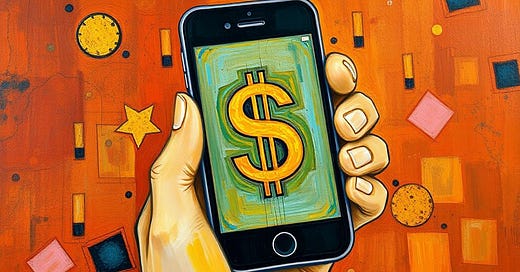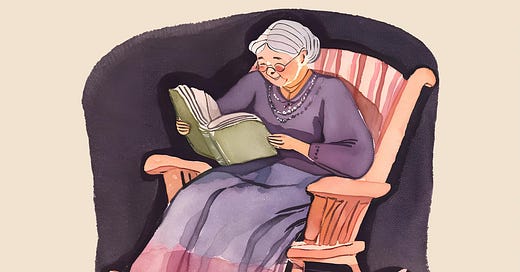
Put the end user first (and check your apps!)
This is a rookie error made by the biggest businesses...
I’m a bit of a tight bastard at times.
And subscriptions are *always* first to be looked at when I run through my finances.
Do I really need that subscription I forgot to cancel two months ago?
Yes, I know I’m an advocate of the subscription economy, but part of that advocacy is due to the fact that I fall into the traps.
Some traps are entirely self inflicted. If I subscribe for one month to Disney, with the intention of watching one film, and then forget to unsubscribe, that’s on me.
But, there’s a nastier, hidden trap within these subscriptions - that in fact permeates throughout many business, subscription or not - and can ruin your reputation in the eyes of your customers.
Recently, I decided to can my YouTube subscription for all of a week.
Why?
Because it was £16.99 per month.
Within two days, I was annoyed with the ads, so went back, with my tail between my legs.
£12.99.
Yes, a whole four pounds cheaper.
This might seem like a ‘nothing’ issue. You could reasonably assume that it was a promotion, or similar.
But no.
This is the result of the ‘Apple Tax’. Where a company charges more to those who subscribe through the App Store, compared to those who subscribe direct.
The same tax was applied onto my Soundcloud subscription. And likely many others.
I understand the reason why these companies do this. Apple charges companies a whopping 30% for the ease of subscription directly from the app. And the companies have, quite rightly in my opinion, decided to pass that tax onto the end customer.
I’m not a fan of recharging credit card costs - that’s a reasonable cost of doing business. But 30% just because someone has used the app to subscribe rather than visiting the website? That’s predatory behaviour by Apple. And leads to all sorts of unintended consequences when the consumer learns of it.
The first is that it encourages users to shop around.
The whole idea of the integrated App Store is to maximise the user’s time on the device. And by making everything integrated, to make it a no brainer to buy a phone that just works.
However, the pricing difference is significant enough to change behaviour. After all, we don’t just tend to subscribe to one app.
The average consumer spends around £700 per year on subscriptions, according to various studies, and a potential 30% difference is a fair whack.
So, not only does this approach defeat the vision of what an App Store should be, but it opens the door for both companies and consumers to find ways around it.
This is then amplified by negative publicity. I won’t copy the whole article here, but when Apple are accused of extortion and acting like the Godfather by the BBC, it’s not a good look.
And what does this lead to? An impact on the brand. Why would I want to subscribe to anything from the App Store, whether priced differently or not, when I know it’s hitting someone in the pocket?
So why is this in place?
In my uneducated eyes, a vision of the benefits that the tech can deliver from the dreamers, has been monetised and bastardised by the bean counters. A benefit of the product has become a benefit to their EBIT. And what should be something that builds brand advocacy has become a reason to think ‘you robbing gits’.
Apple evangelists might claim that Google Play charges the same - I believe that’s correct. It’s not just Apple. They might also claim that it’s to pay for the tech. Yeah… I don’t buy that. I use YouTube on my TV, via the remote control. Apple didn’t make my TV. All they are doing is processing a monthly payment, by virtue of the fact that I chose to subscribe in app previously.
There are plenty of examples of this. It’s not just subscriptions.
Take train prices.
There’s an arbitrary 9:30am cut off where a ticket becomes cheaper, due to off peak pricing. Sometimes, it becomes ‘super off peak’ a little later at say 10:30am. Add to that mix a bunch of railcard discounts, some of which kick in at 10am, and a flawed pre booking system that often ends up being punitive because of the failures of the rail companies themselves; and you get a system that’s simply not fit for purpose.
A system that has a really busy train at say 8am to get people into the office at 9am, and a really busy train at say 9:35am for those who don’t want to pay full price. With empty trains in between.
Rather than focusing on tweaking timetables by a minute every six months, wouldn’t some kind of semi-dynamic pricing be a better focus for the operators, to help avoid these behaviours driven by pricing?
After all, busy trains lead to unavailable seats, which lead to customer complaints.
Imagine a train that’s £25 peak, £12.50 off peak.
How about every six months, they identify the busiest train and price it at say £30. Then, find the two around it and price at £25. Next two, £20. And so on. Tapered pricing, noted down on the timetables if anyone still gets the paper version.
Immediately, they allow everyone to decide what’s more important to them - saving money, saving their own time, or feeling like they’ve ‘hacked the system’. Clearly these numbers would need to be modelled to make sure it stacks up. But, I’m certain it’ll help spread the commuting load amongst a number of trains. After all, there’ll be some people who’ll be delighted to save a tenner by leaving half hour earlier - and they might even spend it on a coffee at the station.
Any hole in your pricing that allows a customer to exploit a ‘hack’, such as adding on free items to their burger to save a few pence, can impact you far beyond the hack.
Now, I’m pretty sure you don’t run a business as big as Apple, or a train operator.
But regardless, you should remember that the power of pricing impacts much more than just your profit. Both the perception of pricing, and the price itself, impacts buying behaviour.
If you do anything from this post, I’d ask that you take a step back. Look at your business, and the things that could be off-putting or damaging. Think about what’s fair, and if appropriate, make the change.
Carl Reader is a WH Smith Bestselling Author and international keynote speaker with a real passion for helping people do better. There are two ways to learn more about Carl! You can either follow him on Social Media if you’re just curious (@carlreader on most platforms), or if you’d like to learn a little more about what he does on stage, through content and in the media from a commercial perspective, you can visit his website at www.carlreader.com
You can buy a copy of his last book BOSS IT online, wherever you are in the world. And of course, I’d love you to subscribe to this community to be the first to see everything I have to share - just click the button below. It’s free of charge!
Please note that the main image on this article was generated using AI. The words are all my own unless explicitly stated.
There’s an important disclaimer which applies to all content shared on this Substack, available at the bottom of the about page, together with the statutory information that is required to be shared under current UK legislation.












